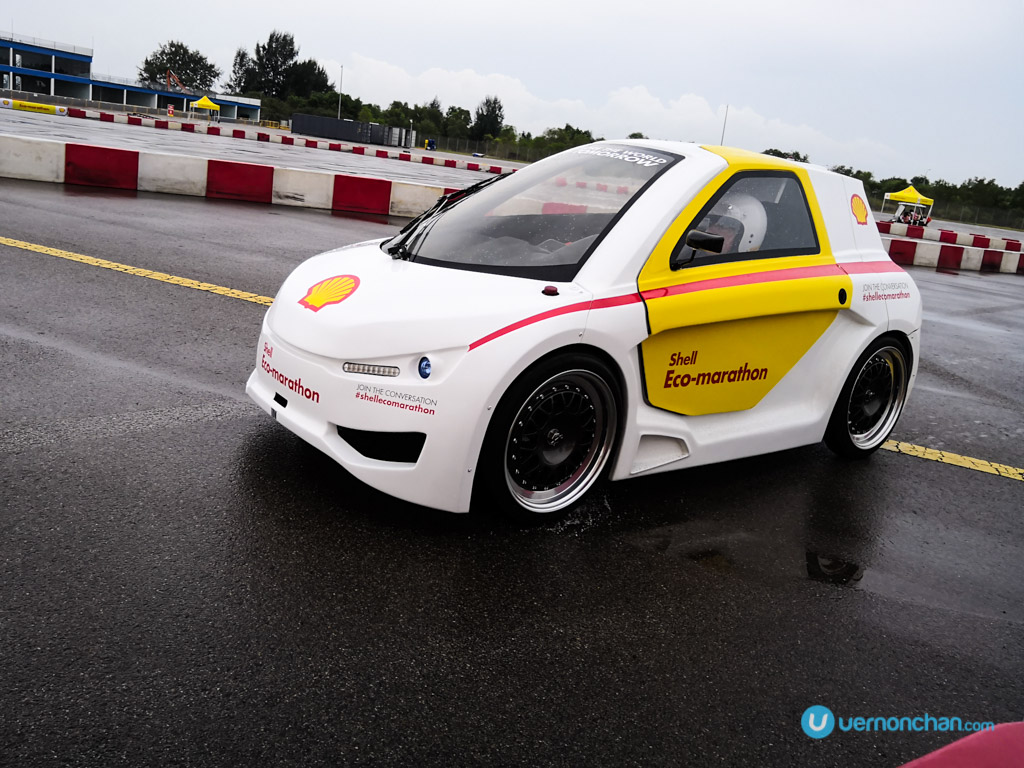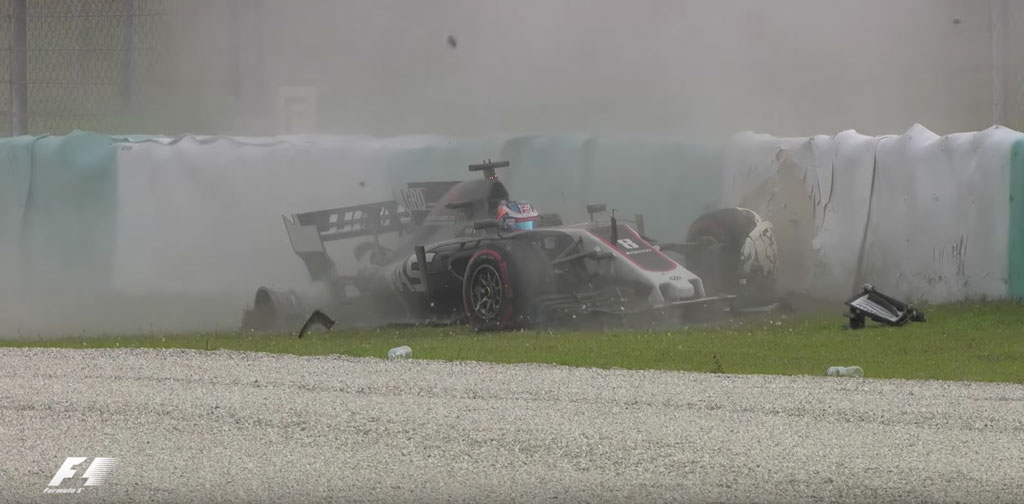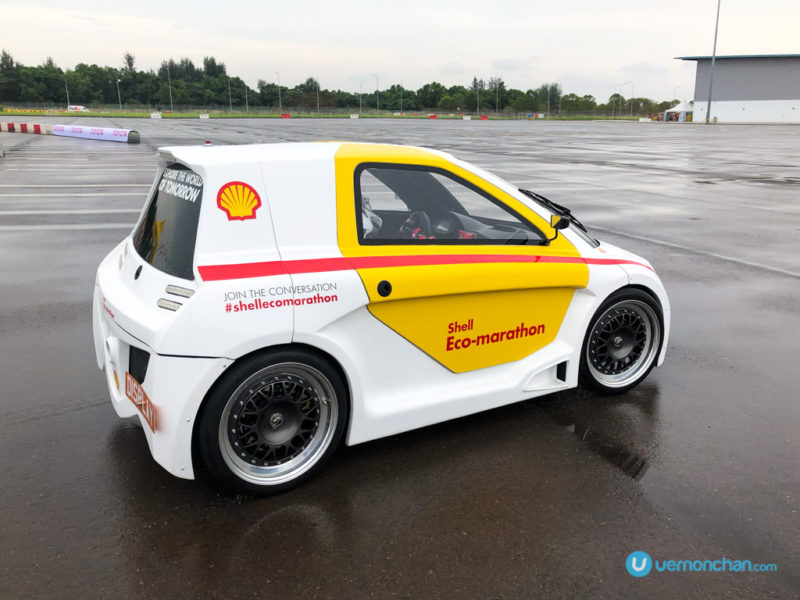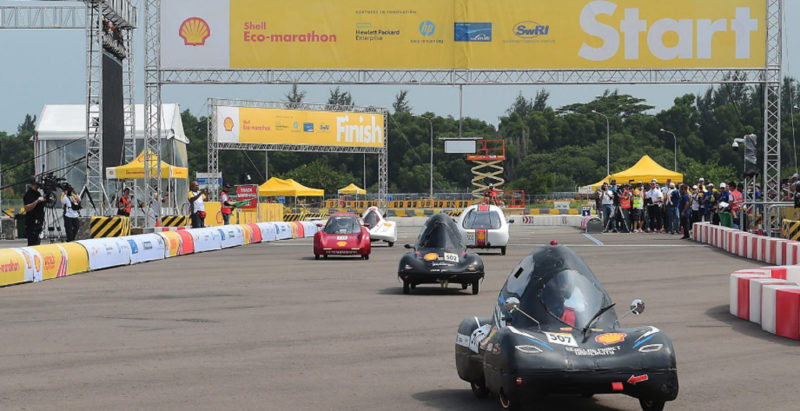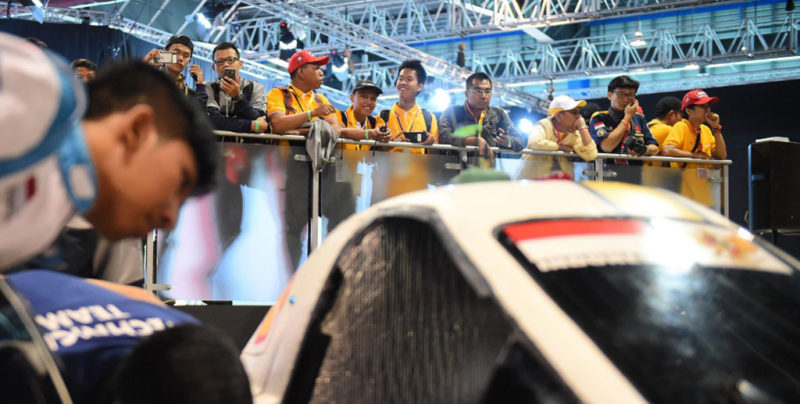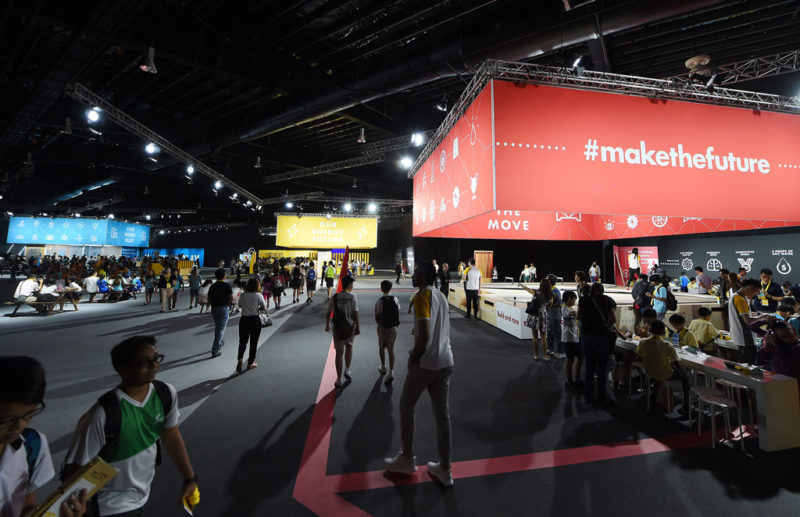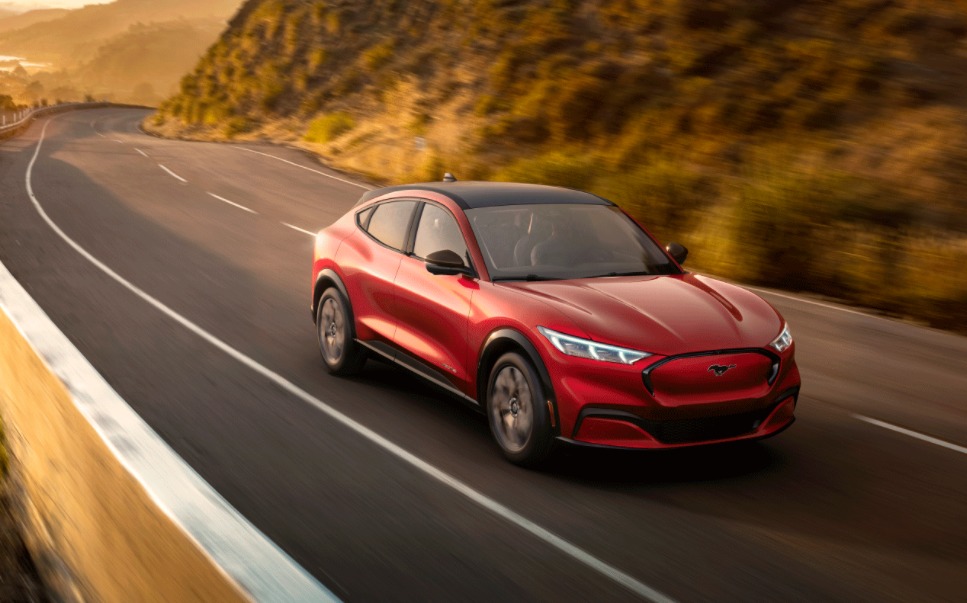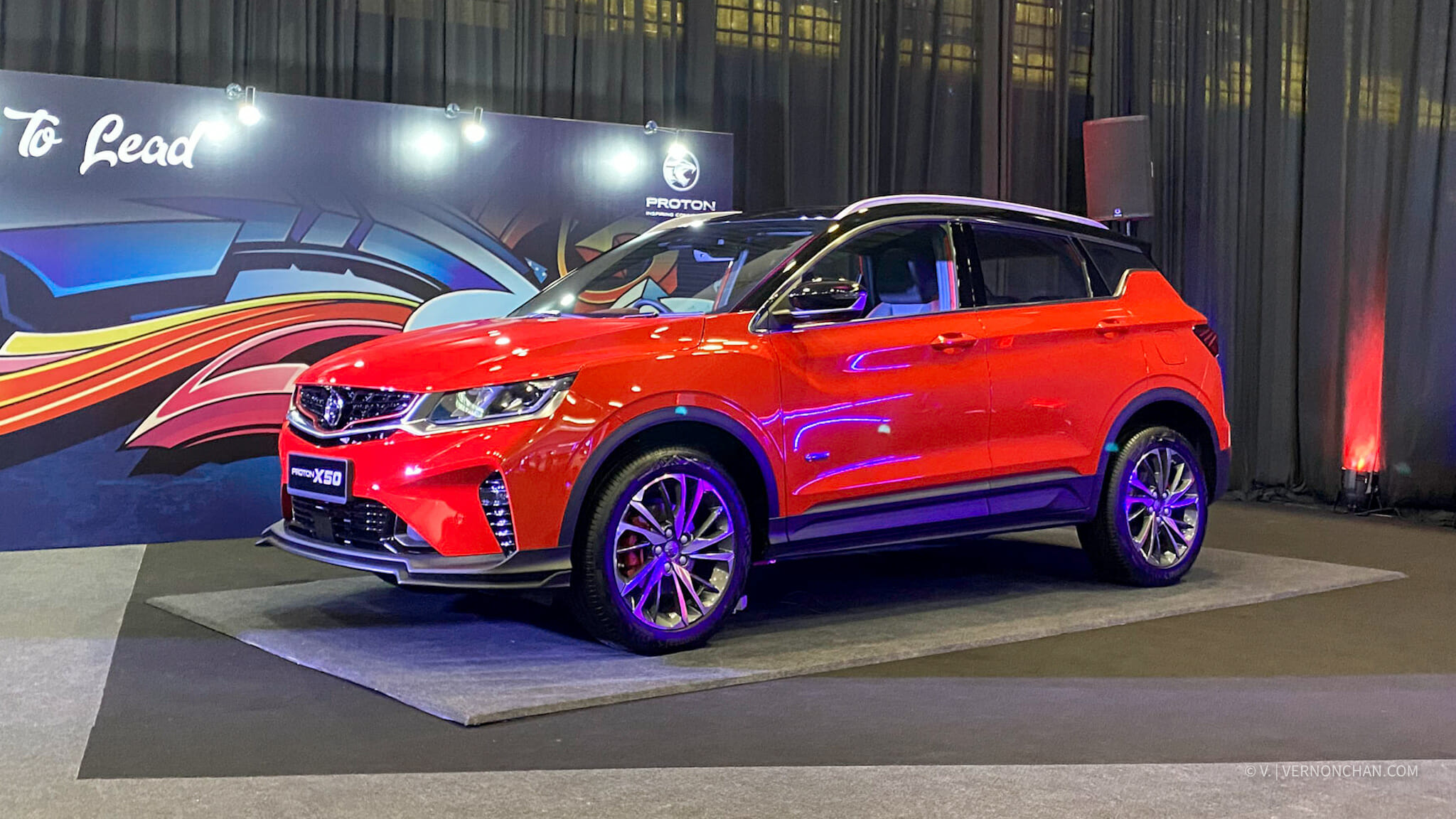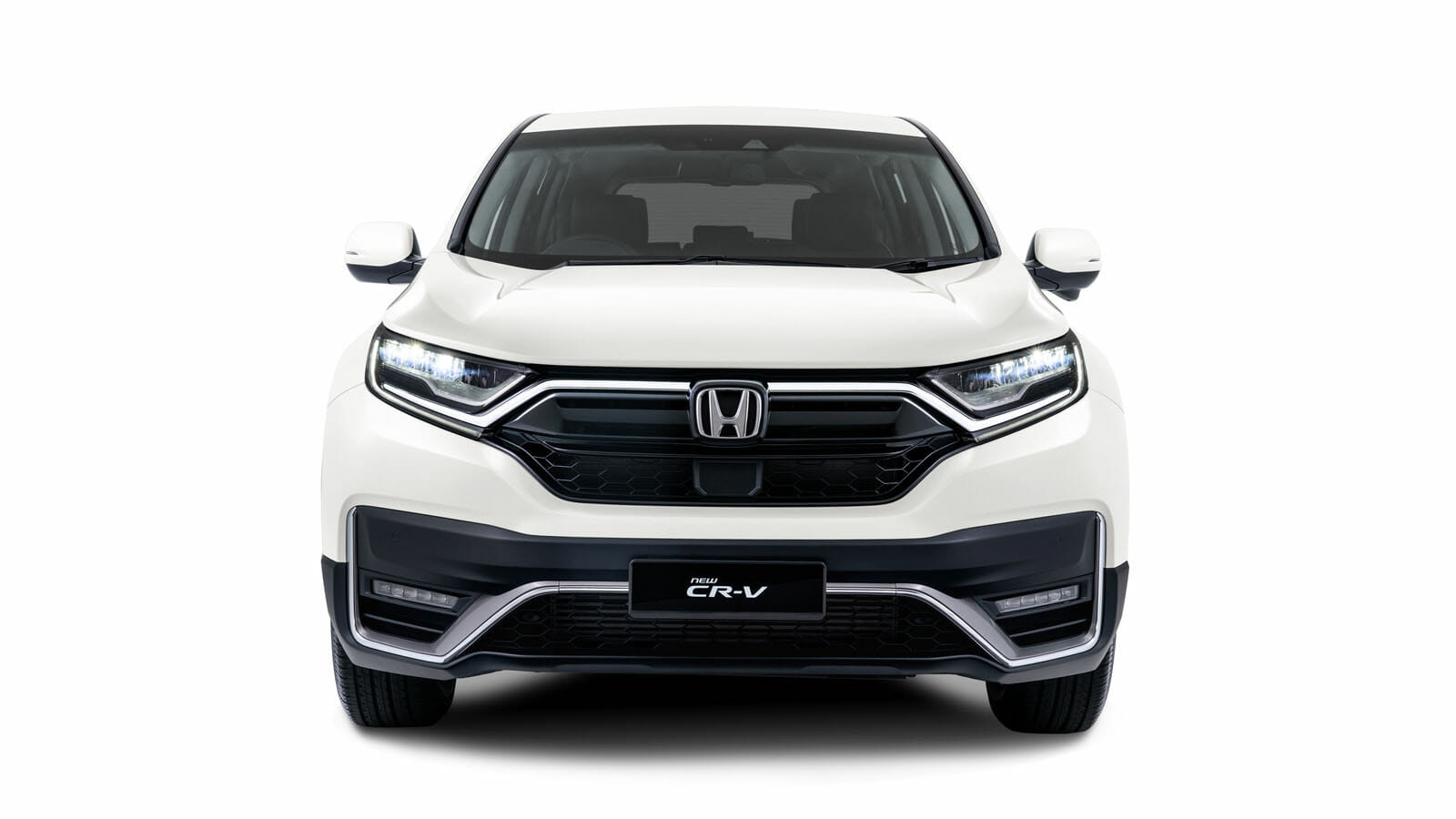“If you go too fast, you’ll burn too much fuel,” says Ian Albiston, Shell technical specialist at the helm of Shell’s own UrbanConcept media Vehicle. “If you go too slow, you’re going to miss the 25-minute cut-off mark,” he continues.
Ian and I have met before. Last year at the inaugural Make the Future Singapore festival, I was all set to give the Prototype vehicle a spin on the 1.1km circuit.
But of course, the universe had other plans for me.
As luck would have it, I was too tall for the single-seater Prototype, so I had to settle for a taxi ride in the UrbanConcept.
“Kylie” the Urban Concept Media Vehicle
First, let me explain the differences between the two. The UrbanConcept is a lightweight two-seater vehicle, with all the creature comforts of a typical road-going car—including air conditioning.
I was kidding about the “comfort” bit. It’s futuristic-looking, edgy even, complete with cool gullwing doors and a carbon fibre body built upon an aluminium honeycomb monocoque chassis. It has a wheelbase of 2m and tips the scales at just 235kg.
“If you go too fast, you’ll burn too much fuel”
If you take Ian and I into account, we’d hit half a ton without breaking a sweat.
Anyway.
Under the hood, the UrbanConcept rocks a familiar Yamaha 125cc forced air-cooled 4-stroke scooter gasoline engine, pushing out 9bhp @ 7,500rpm and 9.6Nm of torque @ 6,000rpm.
This power is transferred to the rear wheels via an automatic CVT with a chain reduction final drive.
I know, you may think, that’s not terribly much. And you’re right. But this is where other variables come into play: weight, rolling resistance, aerodynamics, drivetrain and powertrain efficiency, and to an extent—driver skill.
The car has a puny fuel tank, with a capacity of just 350ml. It drinks regular unleaded RON95 gasoline and returns about 100km/L in fuel consumption.
The cabin is sparse, with surprisingly plenty of legroom for my 6-foot frame. I can fit snuggly into the racing bucket seat and the five-point harness ensures I don’t flip about when Ian negates 5G corners. Hah.
Prototype Media Vehicle
The Prototype, meanwhile, is a whole new ball game. It’s a three-wheeled, single-seater mini formula car that weighs just 70kgs. And sorry, no air-conditioning.
With a wheelbase of just over 3m, it’s more suited to smaller, shorter drivers. Without a doubt, weight is everything when it comes to racing and efficiency, so what you’ll notice is that most teams at the Shell Eco-marathon are small and a large number are women.
Regardless of gender and body structure, one thing’s for sure, the Prototype is a bitch to drive, mind the language. You lie almost flat on your back, with a small window to view the road ahead.
There are no pedals, and the steering will be familiar to people who ride bikes—it’s basically a handlebar that connects directly to the front wheels. You pilot just as you would a bike, with throttle, brakes, and a kill switch, integrated on the handlebar.
The Prototype runs a Honda GX160 lawnmower engine—a 4-stroke, single cylinder lump with a displacement of just 163cc. It pushes out 4.8bhp @ 3,600rpm with a max torque of 10.3Nm @ 2,500rpm.
The wheel setup is unique: two wheels on the front axle, and a single at the rear. All student team cars in the category follow this specification.
The powerplant also drinks regular RON95 gasoline, stored in its diminutive 250ml fuel tank.
This super-efficient sarcophagus does an impressive 177km per litre, although student teams can record in excess of 2,000km per litre. In fact, the winning team of the Asian leg last year recorded 2,289km. An impressive feat indeed.
So, these are the two purpose-built media vehicles based on official SEM technical specifications, the same regs all student teams adhere to in the competition.
Now, gasoline isn’t the only energy source that can be used in vehicles.
Shell Eco-marathon: The competition
While we have the UrbanConcept and Prototype as main categories, the competition is then subdivided into various sub-categories based on energy source.
There’s internal combustion engines: gasoline, diesel, ethanol (biofuel); battery-electric power; and hydrogen fuel cell. Internal combustion covers 60% of all vehicles in the competition although increasingly, we’re seeing more battery- and hydrogen-powered entries.
Teams go through a rigorous, stringent 190-point technical inspection before they are allowed on the track to compete.
Speaking of which, technical specifications have evolved over the years, to be in tune with today’s energy trends as well as setting benchmarks for the future.
According to Norman Koch, general manager of Shell Eco-marathon, there was once a student team that rigged a sail on their vehicle to harness wind power when their fuel was depleted.
Suffice to say, the technical specifications were modified to disallow such creative attempts in the future.
That doesn’t mean that Shell Eco-marathon stifles creativity. In fact, it’s exactly the opposite. It’s an amazing platform that forces students to approach problems creatively whether it’s in aerodynamics, design, material, telematics, weight optimisation, and more.
It’s about pushing boundaries, teamwork, perseverance. It’s a holistic approach to solving one of the world’s biggest challenges: energy.
The quest for ultimate fuel efficiency
The concept for the Eco-marathon actually dates back a lot further than we think. In the 1930s, it started as a challenge between staff at Shell to see who could record the furthest distance on a set amount of fuel.
In the last 30 years, Shell has officially run the Eco-marathon to continue to challenge students to develop the most efficient vehicle possible and to push boundaries.
This year will be the ninth year it is held in Asia, and the second time in Singapore. Over 120 student teams from 18 countries around the Asia Pacific and the Middle East compete in this long-running competition, including seven teams from Malaysia.
What the future holds
Autonomous vehicles are rapidly becoming a reality. Most automakers have an autonomous vehicle strategy in place, and some already have products in place.
In light of this, the Shell Eco-marathon will open the competition to autonomous vehicles in the future, as soon as 2019. One of SEM’s technical partners, Altair has already started academy workshops in Europe to prepare and train students in the development of autonomous vehicles. Altair provides their HyperWorks software to develop their cars.
By the way, Oxford University’s world-leading Mobile Robotics Group demonstrated an Autonomous UrbanConcept Vehicle equipped with its Selenium mobile autonomy system at the 2016 Shell Eco-marathon in Europe.
Selenium is the same technology that powers the Oxford RobotCar—UK’s first autonomous car approved for public trials.
The Shell Urban Concept Media Vehicle dubbed “Kate” can sense its surroundings using a combination of cameras and laser range finders.
Make the Future Singapore
Shell Eco-marathon is part of Make the Future Singapore which runs from Thursday, 8 March (9.00AM-7.00PM) to Sunday, 11 March (10.00AM-7.00PM) at Changi Exhibition Centre. If you plan to take public transport, there are free shuttle buses from Expo MRT station, starting at 10.30AM daily.
If you’re driving, free parking is available at the venue, from 9.00AM.
Entrance to the festival is free but do register for free tickets.
For more information on Make the Future Singapore and to register for free priority tickets, please visit http://sg.makethefuture.shell.
Follow me for updates
For on-the-ground updates, follow me at vernonchan.com/cars/makethefuture, as well as on Facebook, Twitter and Instagram.
#MTFS2018 #makethefuture #shellecomarathon #SEMA2018 #VCSEMA2018


